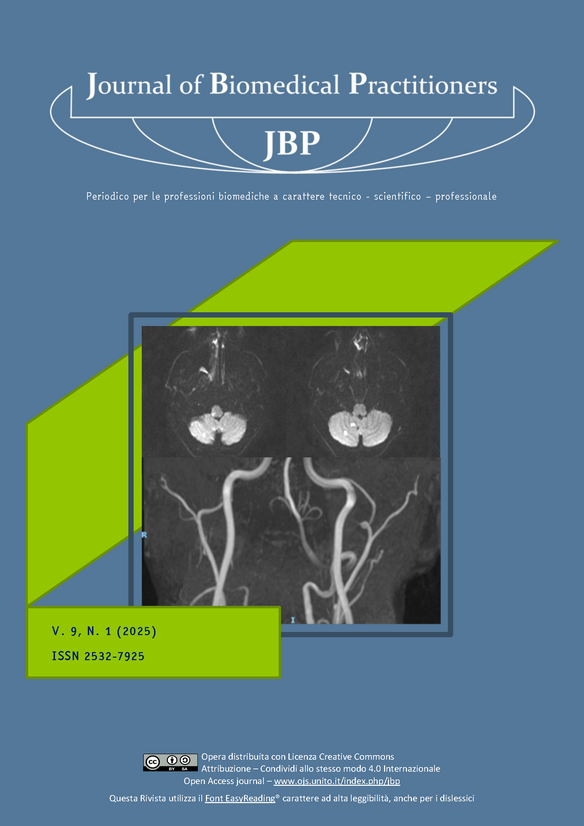Are sanctions and preventive measures an effective strategy to ensure workplace safety?
Main Article Content
Abstract
INTRODUCTION
Workplace safety represents a central aspect for the protection of workers’ health and the prevention of occupational accidents. Despite recent regulatory updates and investments in the continuous training of workers, the much-anticipated reduction in these accidents still seems distant. Why, despite the existence of a legislation that covers various areas and safety tools, is a significant decrease in workplace fatalities still elusive? The culture of safety and prevention seems still far away — almost an unattainable goal — thus jeopardizing efforts and leaving a crucial issue in the world of work unresolved. The aim of this research is to understand how sanctions, in addition to being a repressive method, can serve — if used correctly — to uncover the motivations behind resistance to change and to the culture of safety.
MATERIALS AND METHODS
This study, based on the analysis of the sanctioning system of a Local Health Authority (ATS) in the Lombardy Region, explores the correlation between the sanctions issued and the incidence of occupational accidents over the three-year period 2021–2023. To this end, the sanctioning system was analyzed by examining data relating to administrative sanctions (Art. 301-bis of Legislative Decree 81/08) and criminal sanctions (Art. 301 - Applicability of the provisions of Articles 20 and following of Legislative Decree No. 758 of 19 December 1994), as well as the recorded workplace accidents in the considered period (2021–2023). The analysis made it possible to identify any relationships between the detected violations and the types of accidents in different activity sectors.
RESULTS
The analysis of the data collected over the three-year period shows a reduction in violations punishable by administrative sanctions, decreasing from 10 sanctions in 2021 to 7 sanctions in 2023. The most frequently violated article punishable by administrative sanction was Article 86, paragraph 1, of Legislative Decree 81/08, concerning the verification and control of electrical systems, with a total of 11 sanctions over the last three years. Violations punishable by criminal sanctions, on the other hand, increased from a total of 694 sanctions in 2021 to a total of 1,068 sanctions in 2023. The most frequently violated article was Article 37 of Legislative Decree 81/08, relating to mandatory worker training. Comparing the data relating to issued sanctions and workplace accidents, it emerged that in 2021, out of a total of 694 criminal sanctions issued, 128 were related to an accident, while 80 were not related. In 2023, out of a total of 1,068 criminal sanctions issued, 139 were related to an accident, while 99 were not related.
DISCUSSION AND CONCLUSION
The analysis conducted on the sanctioning system by control bodies — particularly by inspectors of a Local Health Authority (ATS) in the Lombardy Region — highlights the importance of adopting an integrated approach that combines sanctions, training, and prevention in order to sustainably and effectively improve workplace safety. The sanctioning system serves not only as a deterrent tool but also as a fundamental lever for prevention. In this regard, it is recommended to strengthen the culture of safety through continuous training programs and the dissemination of good practices. Such an integrated approach is essential to enhance prevention measures and ensure effective and efficient protection of health in the workplace.
Downloads
Article Details
The authors agree to transfer the right of their publication to the Journal, simultaneously licensed under a Creative Commons License - Attribution that allows others to share the work indicating intellectual authorship and the first publication in this magazine.
References
[1] Sorensen G, Sparer E, Williams JAR, Gundersen D, Boden LI, Dennerlein JT, Hashimoto D, Katz JN, McLellan DL, Okechukwu CA, Pronk NP, Revette A, Wagner GR. Measuring Best Practices for Workplace Safety, Health, and Well-Being: The Workplace Integrated Safety and Health Assessment. J Occup Environ Med. 2018 May;60(5):430-439
[2] Organizzazione Internazionale del Lavoro (OIL/ILO) Safety and health at the heart of the future of work" (2019)
[3] Chang YC, Hsu MC, Ouyang WC. Effects of Integrated Workplace Violence Management Intervention on Occupa-tional Coping Self-Efficacy, Goal Commitment, Attitudes, and Confidence in Emergency Department Nurses: A Clus-ter-Randomized Controlled Trial. Int J Environ Res Public Health. 2022 Feb 28;19(5):2835.
[4] Galletti M, Ricci F. Psicologia del lavoro e reinserimento post-infortunio. Milano: FrancoAngeli; 2020.
[5] Associazione Nazionale fra Lavoratori Mutilati e Invalidi del Lavoro (ANMIL). Rapporto sui costi sociali e azien-dali degli infortuni sul lavoro. Roma: ANMIL; 2021.
[6] Dr Maria Neira, Organizzazione Mondiale della Sanità (OMS/WHO) "Healthy workplaces: a model for action",2010
[7] Gianfranco Amato e Ferdinando Di Fiore, D.lgs. 9 aprile 2008 n. 81 s.m.i, tutela della salute e della sicurezza nei luoghi di lavoro, Ministero del Lavoro e Politiche Sociali, 2025.
[8] Regione Lombardia. Report sulle attività di vigilanza delle ATS. Milano: Regione Lombardia; 2022.
[9] Banca dati ATS della Regione Lombardia
[10] L. 689 /1981 – sanzioni amministrative modifiche al sistema penale
[11] D.lgs. 758/94 Disposizioni in materia di prescrizioni penali e regolarizzazioni in caso di violazioni in ambito di sicurezza sul lavoro. Modificazioni alla disciplina sanzionatoria in materia di lavoro (G.U. 26 gennaio 1995, n. 21, suppl. ord.)
[12] Ispettorato Nazionale del Lavoro (INL). Relazione annuale sulle attività ispettive. Roma: INL; 2022.
[13] Ministero del Lavoro. Relazione sulle attività di vigilanza in materia di salute e sicurezza. Roma: Ministero del Lavoro e delle Politiche Sociali; 2023.
[14] INAIL. Rapporto annuale sugli infortuni e le malattie professionali. Roma: INAIL; 2023.
[15] Ministero della Salute. Piano nazionale della prevenzione 2020–2025. Roma: Ministero della Salute; 2021.
[16] European Agency for Safety and Health at Work (EU-OSHA). Rehabilitation and return to work: Analysis of EU-level strategies. Luxembourg: EU-OSHA; 2020.
[17] INAIL. Relazione annuale sull’attività dell’Istituto. Roma: INAIL; 2021.
[18] INAIL. La cultura della prevenzione nei luoghi di lavoro. Roma: INAIL; 2022.
[19] Regione Emilia-Romagna. Report regionale infortuni sul lavoro e attività di vigilanza. Bologna: Regione Emilia-Romagna; 2022.

